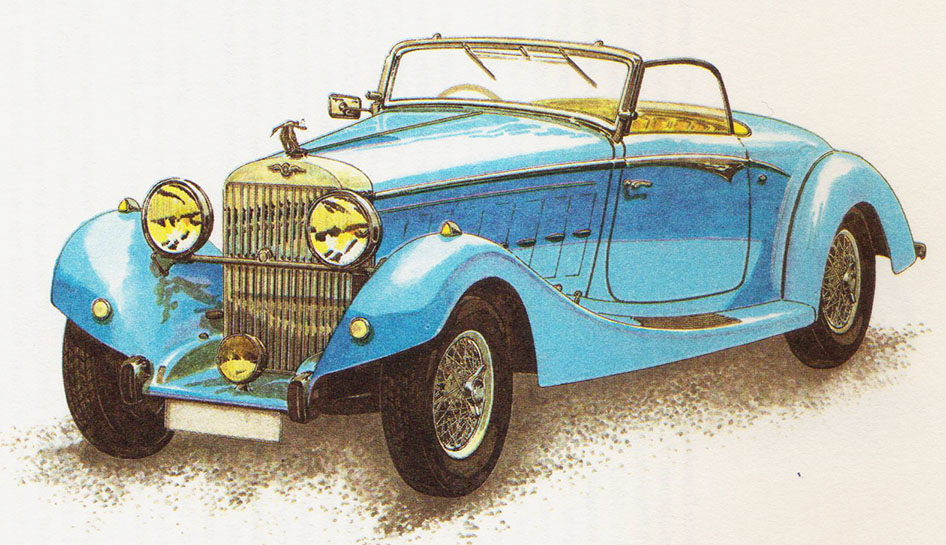HISPANIC-SWITZERLAND TYP 68 – year 1934
Manufacturer: You are. Hispano-Suiza Francaise, Colombes-Seine wood, France.
The Hispano-Suiza brand was placed in the 1920s and 1930s in an equal row with such giants of the automotive world, like Rolls-Royce in England, Maybach in Germany or Isotta-Fraschini in Italy.
Immediately after World War I, the company introduced the beautiful H 6, which uses many original design solutions. Inline engine, 6-cylinder, with overhead valve OHC had a capacity 6597 cm3 and at 2400 rpm reached the power of 100kW (133 KM). The crankshaft supported by seven bearings was not a simple forging, but it was made of a single mass of steel 350 kg. The twin vertical carburetor was controlled from the center of the steering wheel. The steering shaft consisted of five compact tubes, precisely machined, for actuating the acceleration gears, ignition and horn.
The classic chassis with a longitudinal frame and rigidly suspended wheels was sprung with extremely long longitudinal leaf springs. The chassis itself had a curb weight 1250 kg. With the bodywork, the car weighed almost two tons and developed top speed 130 km/h. Power-assisted brakes were indispensable for such a colossus, the light alloy brake drums had rich ribs due to cooling. Fuel tank, located behind the rear axle, had a capacity 100 liters. The reliability of the double ignition was provided by two rechargeable batteries.

Manufacturer: You are. Hispano-Suiza Francaise, Colombes-Seine wood, France.
After the merger of Hispano-Suiza with the Societe Ballot car manufacturer in 1931 r. an excellent car appeared on the market Hispano-Suiza 68, recognized by specialists as the king of cars. Square shaped engine, with the same cylinder diameter and stroke 100 mm, had a capacity 9424 cm3. The tried and tested V-shaped 12-cylinder engine design was a variant of the aircraft engine. The work of a Swiss constructor, Mark Birkigt, had a capacity of 147kW (200 KM), which made it possible to accelerate z 0 on 100 km / h within 11,5 seconds. In direct gear, this powerful car reached speeds 170 km/h.
Contrary to its impressive performance, the model 68 did not conquer the automotive market, where, after years of economic depression, cars with a smaller engine capacity were rather sought.